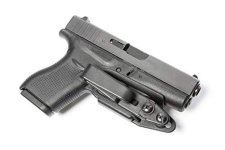Everyone carrying a gun of any type of action must overcome the challenges of their respective choice of action type.
The one who carries a striker-fired gun without a manual safety must overcome the challenge of holstering, drawing, and handling the gun without unintentional discharges. In return they get a consistently, creepy, crappy trigger and typically a low bore-center.
The one who carries a single-action with a safety in condition 1 must overcome the challenge to train and consistently disengage the safety or ride the safety when shooting, and to remember to re-engage the safety before holstering. In return, they get a wonderful, consistent, single-action trigger.
The one who carries a DA/SA auto decocked (condition 2) has to overcome the long, hard DA trigger pull and the inconsistency of the first pull to all subsequent SA trigger actuations, and they must remember to decock the gun before holstering. In return they get a long, hard trigger pull that gives some margin of safety from unintentional discharges, and a single action pull with take-up, grit and a vague wall.
The one who carries a DA (revolver) has to overcome a long, hard DA trigger. In return they enjoy a consistent, smooth trigger pull. The action is always safe from the unintentional pull of a light trigger by any means. The shooter does not have to remember to actuate a safety or decocker. No different actions are required for misfires (no tap, rack, bang) but subsequent trigger pulls will fire the next cartridge. The rate of fire is theoretically greater than a SA auto, and it is more accurate than a gun whose barrel jiggles around when the action is cycling. DA (revolvers at least) do generally have lower capacity than the highest capacity auto loaders. .357 for example is usually capped at 8 shot.
If you receive a benefit from quick-change 20 round magazines, I would suggest a submachine gun might be an even better fit for your mission. They're awesome. Everyone should try one before they substitute a pistol for what really works better. At least then they'll know what they're missing. The buzz gun's usually going to be a SA in condition 1 and hopefully you get a third position on your lever for auto. The tradeoff is they're a little harder to conceal, but you can carry them in a shoulder holster, a briefcase, a shoulder bag, a toolbox, or just under a newspaper.
So you can see everyone has something to overcome to be proficient and safe. Pick your challenge.
The one who carries a striker-fired gun without a manual safety must overcome the challenge of holstering, drawing, and handling the gun without unintentional discharges. In return they get a consistently, creepy, crappy trigger and typically a low bore-center.
The one who carries a single-action with a safety in condition 1 must overcome the challenge to train and consistently disengage the safety or ride the safety when shooting, and to remember to re-engage the safety before holstering. In return, they get a wonderful, consistent, single-action trigger.
The one who carries a DA/SA auto decocked (condition 2) has to overcome the long, hard DA trigger pull and the inconsistency of the first pull to all subsequent SA trigger actuations, and they must remember to decock the gun before holstering. In return they get a long, hard trigger pull that gives some margin of safety from unintentional discharges, and a single action pull with take-up, grit and a vague wall.
The one who carries a DA (revolver) has to overcome a long, hard DA trigger. In return they enjoy a consistent, smooth trigger pull. The action is always safe from the unintentional pull of a light trigger by any means. The shooter does not have to remember to actuate a safety or decocker. No different actions are required for misfires (no tap, rack, bang) but subsequent trigger pulls will fire the next cartridge. The rate of fire is theoretically greater than a SA auto, and it is more accurate than a gun whose barrel jiggles around when the action is cycling. DA (revolvers at least) do generally have lower capacity than the highest capacity auto loaders. .357 for example is usually capped at 8 shot.
If you receive a benefit from quick-change 20 round magazines, I would suggest a submachine gun might be an even better fit for your mission. They're awesome. Everyone should try one before they substitute a pistol for what really works better. At least then they'll know what they're missing. The buzz gun's usually going to be a SA in condition 1 and hopefully you get a third position on your lever for auto. The tradeoff is they're a little harder to conceal, but you can carry them in a shoulder holster, a briefcase, a shoulder bag, a toolbox, or just under a newspaper.
So you can see everyone has something to overcome to be proficient and safe. Pick your challenge.

